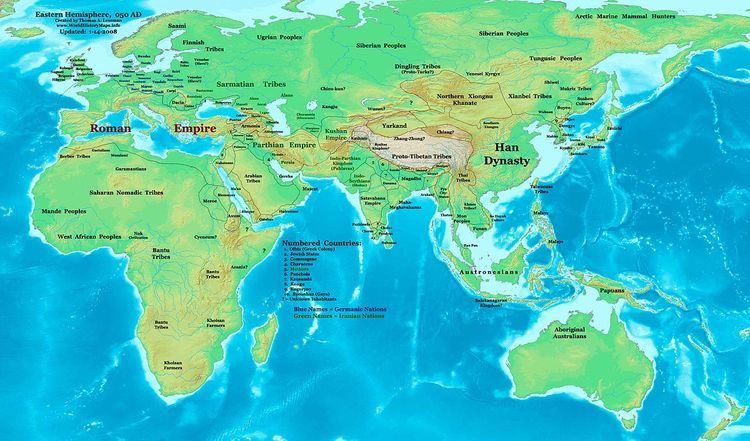 | ||
The 1st century was the century that lasted from AD 1 to AD 100 according to the Julian calendar. It is often written as the 1st century AD or 1st century CE to distinguish it from the 1st century BC (or BCE) which preceded it. The 1st century is considered part of the Classical era, epoch, or historical period.
Contents
- Regional Events and Politics
- Events
- Significant people
- Literature
- Science and Philosophy
- Inventions discoveries introductions
- References
During this period Europe, North Africa and the Near East fell under increasing domination by the Roman Empire, which continued expanding, most notably conquering Britain under the emperor Claudius (AD 43). The reforms introduced by Augustus during his long reign stabilized the empire after the turmoil of the previous century's civil wars. Later in the century the Julio-Claudian dynasty, which had been founded by Augustus, came to an end with the suicide of Nero in AD 68. There followed the famous Year of Four Emperors, a brief period of civil war and instability, which was finally brought to an end by Vespasian, ninth Roman emperor, and founder of the Flavian dynasty. The Roman Empire generally experienced a period of prosperity and dominance in this period and the First Century is remembered as part of the Empire's golden age.
The 1st Century saw the appearance of Christianity, following the life of Jesus of Nazareth in the Roman province of Palestine.
China continued to be dominated by the Han Dynasty, despite a fourteen-year interruption by the Xin dynasty under Wang Mang. Han rule was restored in AD 23; Wang Mang's rule represents the watershed between the Western/Former Han and the Eastern/Later Han. The capital was also moved from Chang'an to Luoyang.
